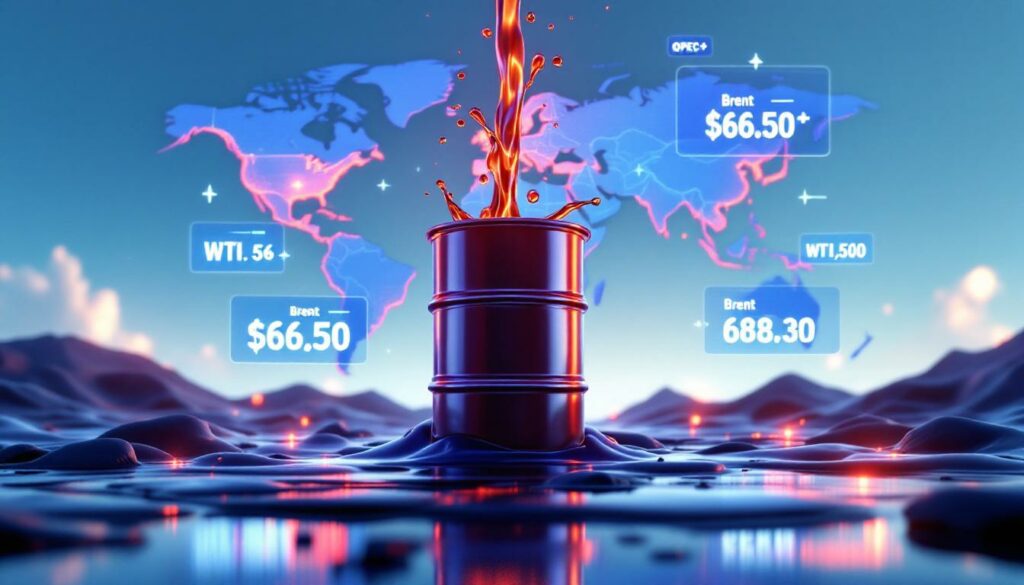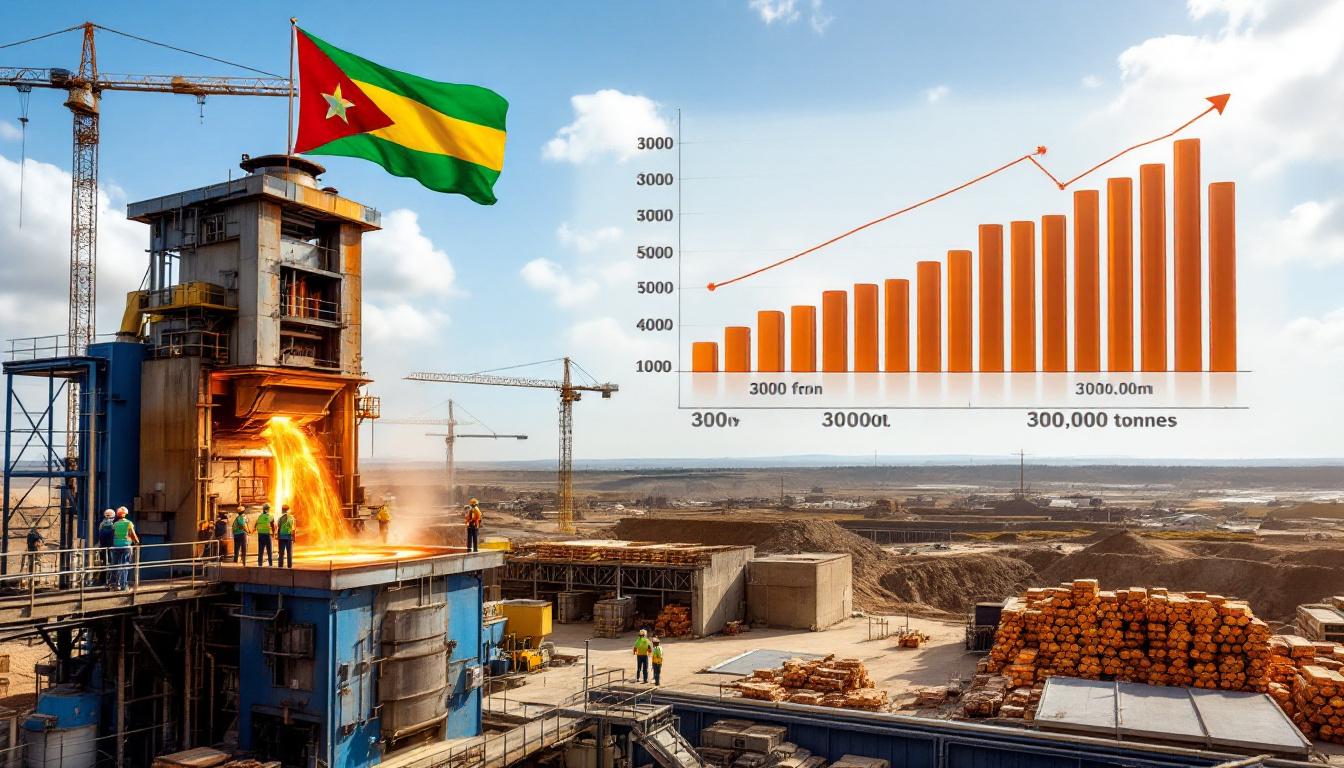Understanding Today's Global Oil Market Dynamics
The global oil market continues to experience significant fluctuations, with WTI crude currently trading at $66.50 per barrel, down 0.75% in the last three hours. Brent crude, the international benchmark, stands at $68.30, showing a similar decline of 0.73% over the past two hours. These price movements reflect the complex interplay of geopolitical tensions, supply adjustments, and economic indicators shaping today's energy landscape.
Crude oil prices today remain highly sensitive to global events, with traders closely monitoring OPEC+ decisions, inventory reports, and macroeconomic indicators for directional cues. The current pricing environment demonstrates the market's continued volatility as supply and demand forces recalibrate.
How Do Different Oil Benchmarks Compare Right Now?
Major Global Crude Oil Benchmarks and Current Prices
| Benchmark | Current Price | Change | % Change | Last Updated |
|---|---|---|---|---|
| WTI Crude | $66.50 | -0.50 | -0.75% | 3 hours ago |
| Brent Crude | $68.30 | -0.50 | -0.73% | 2 hours ago |
| Murban Crude | $69.65 | -0.45 | -0.64% | 16 minutes ago |
| Louisiana Light | $70.66 | +2.02 | +2.94% | 3 days ago |
| OPEC Basket | $69.79 | +1.03 | +1.50% | 2 days ago |
The price differentials between these benchmarks highlight regional supply-demand imbalances and quality variations. WTI crude, primarily used in the United States, typically trades at a discount to Brent crude due to infrastructure constraints and quality differences. This discount primarily stems from transportation bottlenecks in the U.S. Midwest and WTI's slightly higher sulfur content compared to the sweeter Brent blend.
Murban crude, the flagship grade from the United Arab Emirates, has shown particular volatility recently following ADNOC's supply adjustments. After earlier cuts that drove prices higher, ADNOC has now restored most of its Murban crude supply, helping to stabilize this benchmark's premium over other grades.
Understanding Benchmark Differences
The various crude oil prices today reflect more than just geographic location—they also indicate quality differences that significantly impact refining costs:
- API Gravity: Higher numbers (lighter oil) generally command premium prices
- Sulfur Content: Lower sulfur "sweet" crudes sell at a premium to high-sulfur "sour" grades
- Transport Access: Landlocked crudes (like WTI) often trade at discounts to seaborne varieties (like Brent)
These fundamental characteristics create persistent pricing relationships between benchmarks that traders monitor for arbitrage opportunities when spreads widen beyond typical ranges.
What's Driving Oil Price Movements Today?
OPEC+ Production Decisions
Recent reports indicate OPEC+ may be moving up its meeting to July 5th with expectations to increase output again. The group has already nudged production higher, though markets appear to be waiting for more substantial barrel increases. This anticipated supply expansion is putting downward pressure on prices as traders adjust their positions.
The timing of this potential meeting is particularly significant as it would occur just before the summer driving season peaks in the Northern Hemisphere. Any production increase would likely target this seasonal demand uptick while attempting to recapture market share from non-OPEC producers.
Kazakhstan's oil production has recently hit an all-time high, potentially creating tensions within the OPEC+ alliance as the group tries to maintain discipline among its members. This production surge highlights the challenges OPEC faces in enforcing quotas among participants with different economic priorities.
Geopolitical Tensions and Supply Disruptions
Several geopolitical factors are influencing today's crude oil prices:
- Canadian Wildfires: Devastating wildfires in Alberta have crippled oil production in Canada's major oil-producing region, taking an estimated 300,000 barrels per day offline temporarily
- Russian Export Challenges: Russia's oil exports have stagnated as prices sink and sanctions continue to impact their market access
- Middle East Production Recovery: ADNOC has restored most of its Murban crude supply after earlier cuts that had contributed to regional price premiums
- Libyan Infrastructure Improvements: Libya has fixed a leak on a crude oil pipeline linked to its top refinery, potentially increasing their export capacity in coming weeks
The Canadian wildfire situation bears particular attention as Alberta's oil sands represent approximately 65% of Canada's total oil production. Extended disruptions there could significantly impact North American supply balances.
Economic Indicators and Demand Concerns
The market is also responding to inventory data and demand signals:
- A surprise crude oil inventory build in the U.S. ended a five-week draw streak, suggesting potentially softer demand
- China continues to purchase significant volumes of Iranian crude oil despite international sanctions
- Russia's discounted oil is no longer considered a bargain for India as global prices have moderated
- Saudi Arabia and Indonesia have signed $27 billion worth of oil and energy deals, indicating confidence in long-term demand
"The unexpected build in U.S. inventories has traders questioning the strength of summer demand just as OPEC+ considers increasing production—a potentially bearish combination for crude oil prices today." — Market analysis from Oilprice.com
How Are Regional Oil Prices Performing?
North American Crude Oil Prices
| Benchmark | Current Price | Change | % Change | Last Updated |
|---|---|---|---|---|
| WTI Crude | $66.50 | -0.50 | -0.75% | 3 hours ago |
| Western Canadian Select | $54.65 | -0.45 | -0.82% | 14 hours ago |
| Canadian Condensate | $69.15 | -0.45 | -0.65% | 14 hours ago |
| Louisiana Light | $70.66 | +2.02 | +2.94% | 3 days ago |
| Eagle Ford | $63.48 | -0.45 | -0.70% | 2 days ago |
| Domestic Sweet @ Cushing | $63.48 | -0.45 | -0.70% | 2 days ago |
North American crude varieties show significant price differentials reflecting both quality variations and logistical constraints. Western Canadian Select trades at a substantial discount to WTI due to its heavier, more sour characteristics and transportation challenges from Alberta to major refining centers.
Interestingly, Canadian Condensate—an ultra-light crude used primarily to dilute heavy oil for pipeline transport—commands a premium even over WTI, highlighting the specialized nature of this product and its essential role in Canada's oil sands industry.
Middle Eastern and African Crude Oil Prices
| Benchmark | Current Price | Change | % Change | Last Updated |
|---|---|---|---|---|
| Murban Crude | $69.65 | -0.45 | -0.64% | 16 minutes ago |
| Iran Heavy | $64.96 | -0.76 | -1.16% | 5 days ago |
| Saharan Blend | $68.65 | -0.72 | -1.04% | 5 days ago |
Middle Eastern and African crude grades typically trade at premiums to WTI due to their proximity to major Asian markets and generally favorable quality characteristics. Murban crude's recent price stability reflects ADNOC's success in managing supply following earlier production adjustments.
Iran Heavy's continued discount compared to other regional benchmarks demonstrates the impact of international sanctions, as buyers willing to purchase this grade demand significant price concessions to offset associated risks.
What Are Analysts Predicting for Oil Prices?
Short-Term Price Outlook
Current market indicators suggest oil prices are set to end the week with a modest gain despite today's dip. The anticipated OPEC+ production increase is already being factored into prices, with traders closely watching for confirmation of output hikes and their implementation timeline.
Market analysts remain divided on the immediate price trajectory:
- Bears point to: Potential OPEC+ supply increases, unexpected U.S. inventory builds, and China's economic growth concerns
- Bulls highlight: Ongoing Alberta production disruptions, seasonal demand increases, and relatively tight global inventories
Most forecasts suggest crude oil prices today will likely remain range-bound between $65-$70 per barrel for WTI in the immediate term, absent any major supply disruptions or demand shocks.
Supply-Side Factors to Watch
Several supply-side developments could impact crude oil prices in the coming weeks:
- OPEC+ production decisions and compliance rates among member countries
- Kazakhstan's oil production has hit an all-time high, potentially creating tensions within OPEC
- Big oil companies are bidding in Libya's first exploration tender in 18 years
- Indonesia is seeking drilling partners to revive oil output from old wells
The Libya exploration tender represents a significant development for African production potential. After years of civil conflict that severely constrained the country's output, this tender signals growing confidence in Libya's stability and could eventually lead to meaningful production increases from a country that possesses Africa's largest proven reserves.
Demand-Side Considerations
On the demand side, key factors include:
- China's continued purchase of Iranian crude despite sanctions
- India's exploration of new sites to boost strategic oil reserves
- Northeast Asia's jet fuel flows to Europe are surging
- China has eased the tax burden on struggling independent refiners
India's strategic reserve expansion bears watching as it represents a structural increase in global oil demand. The country is seeking to increase its strategic petroleum reserves from current levels of approximately 39 million barrels to over 100 million barrels in coming years—creating significant incremental demand during the filling phase.
How Are Refined Products Performing?
| Product | Current Price | Change | % Change | Last Updated |
|---|---|---|---|---|
| Gasoline | $2.117 | -0.002 | -0.07% | 3 hours ago |
| Natural Gas | $3.387 | -0.022 | -0.65% | 3 hours ago |
The relatively stable gasoline prices despite crude oil prices today fluctuations suggest refiners may be absorbing some of the volatility to maintain consumer price stability. This pattern typically emerges during summer driving seasons when refiners prioritize market share over immediate margin maximization.
Refining Margins and Implications
Refining margins (crack spreads) provide critical insights into oil market dynamics:
- 3:2:1 Crack Spread: The difference between the value of 2 barrels of gasoline and 1 barrel of diesel versus 3 barrels of crude oil
- Current Trend: Narrowing crack spreads suggest refiners' ability to pass through crude price changes is diminishing
- Regional Variations: U.S. Gulf Coast refiners typically enjoy wider margins than their European counterparts due to lower energy costs
These refining economics ultimately influence crude oil prices today by affecting refiners' purchasing decisions and crude oil demand patterns.
What Are the Key Events Affecting Oil Markets This Week?
Several significant developments are shaping the oil market this week:
- OPEC+ is considering moving up its meeting to July 5th with expectations to increase production
- A Russian oil executive's death has highlighted a pattern of fatalities in energy roles
- U.S. sanctions are targeting Iran's oil smuggling network
- The U.S. has lifted restrictions on ethane exports to China
- Saudi Aramco could raise $4 billion from power plant sales
- The head of Brazil's climate summit has defended Petrobras oil output increases
The U.S. decision to lift ethane export restrictions to China represents a significant shift in energy trade relations between the two superpowers. Ethane is a critical feedstock for petrochemical production, and this policy change could stimulate increased U.S. natural gas liquids production while providing China with a competitively priced alternative to naphtha for ethylene production.
Regulatory Developments
Beyond headline events, several regulatory changes could impact future crude oil prices:
- U.S. Tariff Considerations: Reports suggest potential U.S. tariffs on Russian oil importers
- EU Climate Policies: The EU continues implementing its Carbon Border Adjustment Mechanism
- IMO 2023 Enforcement: Stricter enforcement of maritime sulfur regulations is affecting heavy crude demand
These regulatory shifts create both challenges and opportunities across the oil value chain, with particularly significant implications for high-sulfur crude producers.
How Are Alternative Energy Developments Impacting Oil Markets?
The energy transition continues to influence oil market dynamics:
- The UK has launched an onshore wind strategy to boost clean power output
- Australia is backing a green hydrogen project despite industry struggles
- AI power use spikes are threatening grid stability
- India's wind and solar output growth has hit a three-year high
- Australia's offshore wind plans are in limbo as Equinor leaves a project
- Ofgem has unveiled a £24 billion grid modernization plan
The UK's renewed focus on onshore wind represents a significant policy shift, potentially accelerating renewable energy deployment in one of Europe's largest economies. This initiative aims to streamline permitting processes that have previously limited new wind installations despite their favorable economics.
Energy Transition Impact on Oil Demand
These clean energy developments affect crude oil prices today through several mechanisms:
- Power Generation Displacement: Each new wind or solar installation reduces fossil fuel demand for electricity
- Electric Vehicle Adoption: Renewable electricity enables EV adoption, displacing gasoline and diesel demand
- Industrial Electrification: Green hydrogen enables hard-to-decarbonize industrial processes to shift away from oil
While these transitions occur gradually, their cumulative impact creates an increasingly challenging environment for long-term oil demand growth projections.
What Should Investors Watch in the Coming Days?
Investors should monitor several key indicators and events:
- The outcome of the anticipated OPEC+ meeting on July 5th
- Weekly U.S. crude oil inventory reports
- China's purchasing patterns for crude oil
- Developments in Canadian wildfire situations affecting oil production
- Russia's export volumes and pricing strategies
- India's response to potential U.S. tariffs on Russian oil importers
Investment Implications
Different oil price scenarios create varied investment opportunities:
- In a rising price environment: Upstream producers with low breakeven costs typically outperform
- In a falling price environment: Integrated majors with strong downstream operations often show more resilience
- In a volatile, range-bound market: Companies with robust hedging programs may deliver more consistent results
"The current price environment requires investors to be particularly attentive to companies' operational flexibility and balance sheet strength, as these factors determine resilience during periods of price volatility." — Oil market analysis from Market Index
The Outlook for Crude Oil Prices
Crude oil prices today remain in a state of flux, balancing between supply pressures from potential OPEC+ production increases and demand concerns tied to global economic conditions. The current price levels around $66-$68 per barrel reflect market uncertainty about the balance between these competing factors.
With geopolitical tensions continuing to simmer and OPEC+ preparing to adjust production levels, market participants should expect continued volatility in the near term. Further analysis suggests an oil price crash could be looming if current trends persist. The anticipated meeting on July 5th will likely provide clearer direction for crude oil prices in the coming weeks.
Balance of Market Forces
Several key factors will determine the direction of crude oil prices today and in the near future:
- OPEC+ Cohesion: The ability of the producer group to maintain discipline among members
- U.S. Production Response: How quickly U.S. shale producers respond to current price levels
- Macroeconomic Conditions: Global growth prospects, particularly in China and other emerging markets
- Geopolitical Developments: Ongoing conflicts and sanctions affecting major oil producers
- Energy Transition Pace: The rate at which alternative energy sources displace oil demand
These interconnected factors create a complex pricing environment that requires constant monitoring and analysis for both traders and long-term investors in the energy sector. Meanwhile, stagnant oil prices factors continue to influence market sentiment alongside potential trade war oil impact concerns.
Recent Alaska drilling policy shift developments have further complicated the North American supply picture, while oil price movements amid trade war tensions remain a significant factor for international markets.
Disclaimer: Oil price forecasts involve inherent uncertainty due to the complex interplay of geopolitical, economic, and technological factors. The analysis provided here represents current market conditions as of July 4, 2025, and should not be construed as investment advice.
Ready to Spot the Next Major Oil Market Opportunity?
Don't miss crucial market shifts in the energy sector—stay ahead with Discovery Alert's proprietary Discovery IQ model, delivering instant notifications on significant ASX mineral and energy discoveries to help you make informed investment decisions. Explore how major discoveries can lead to exceptional returns by visiting the Discovery Alert discoveries page today.




